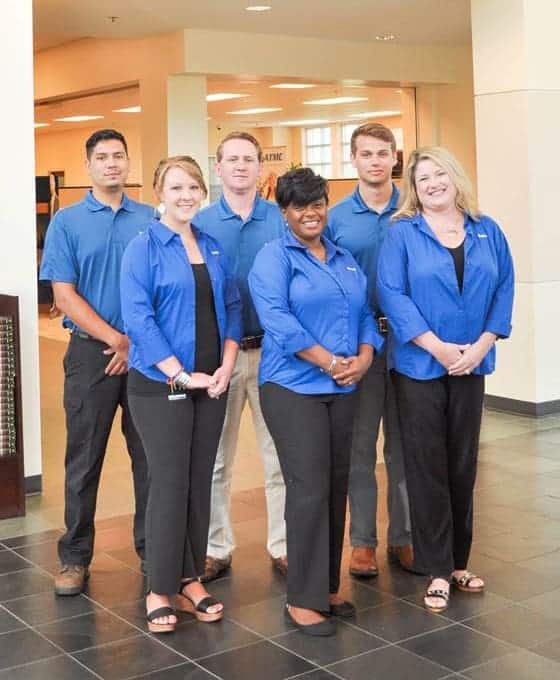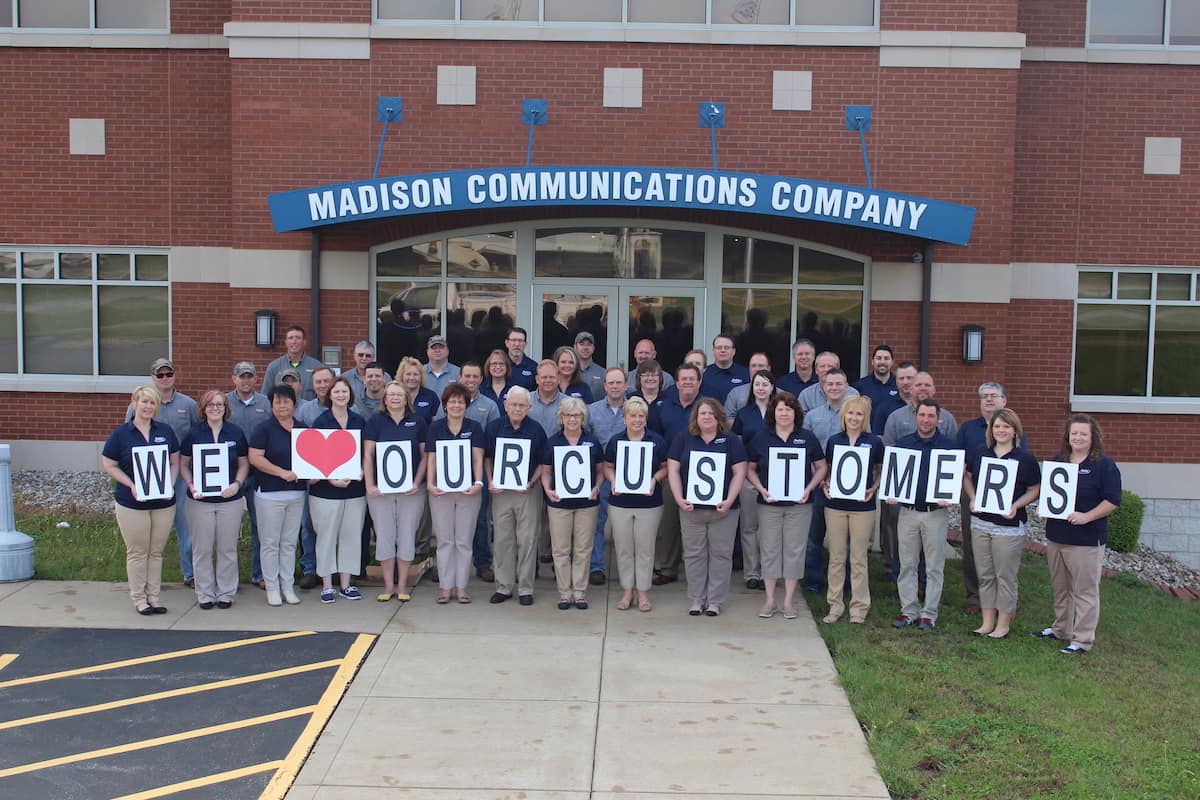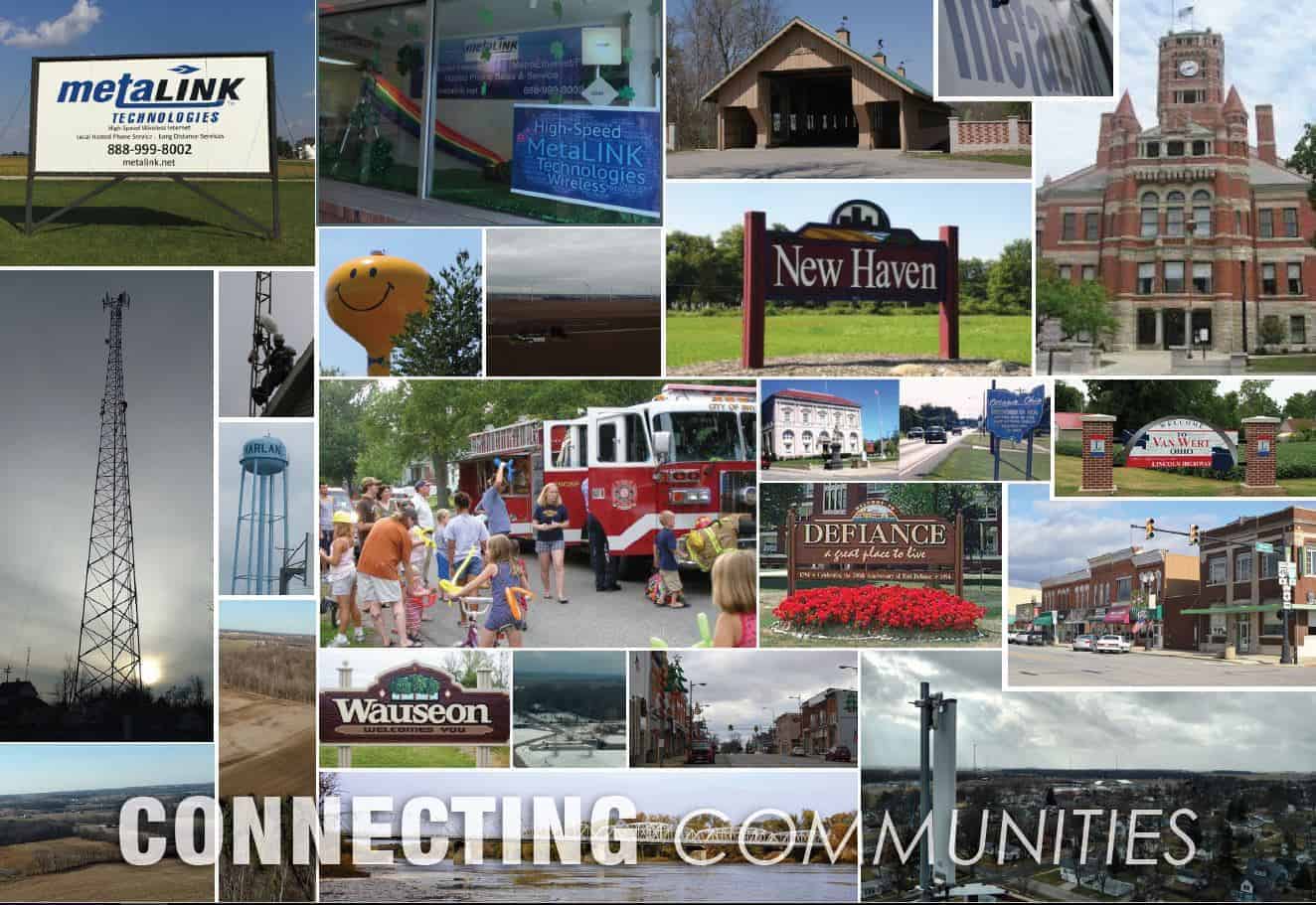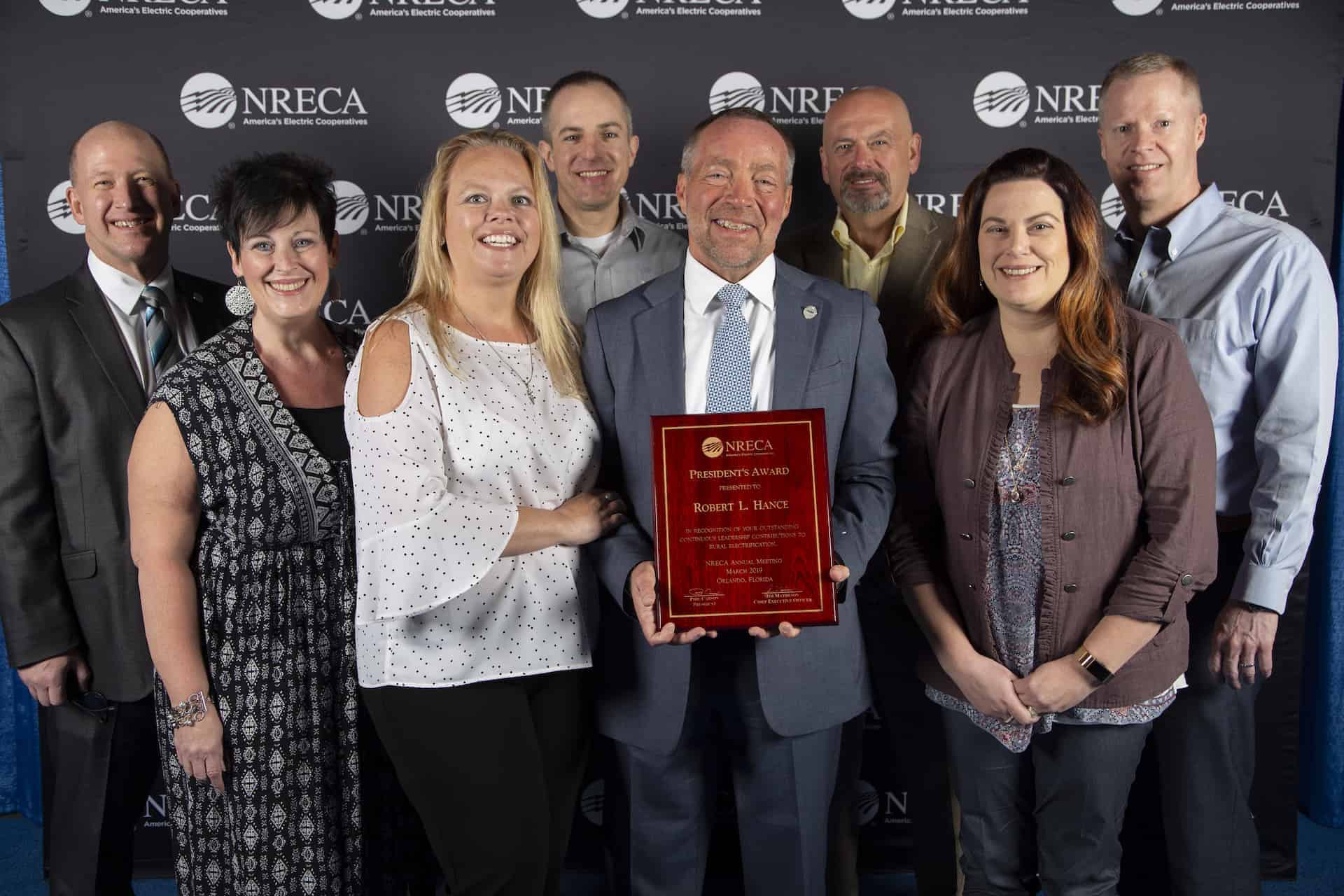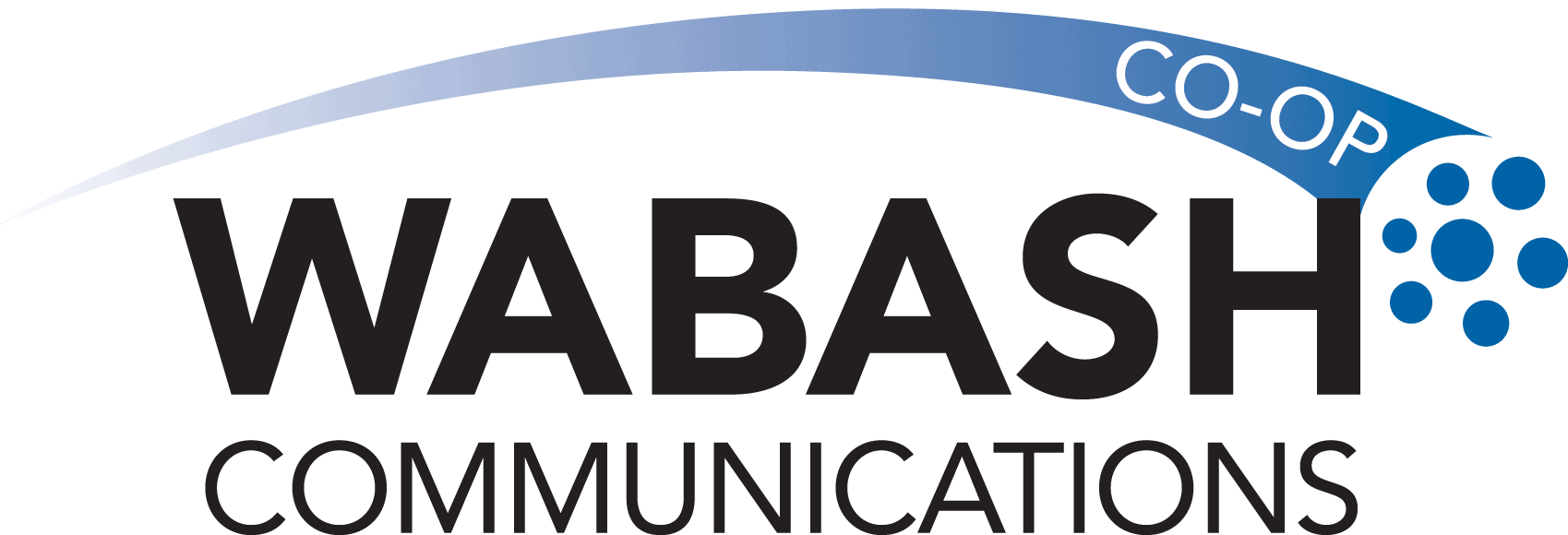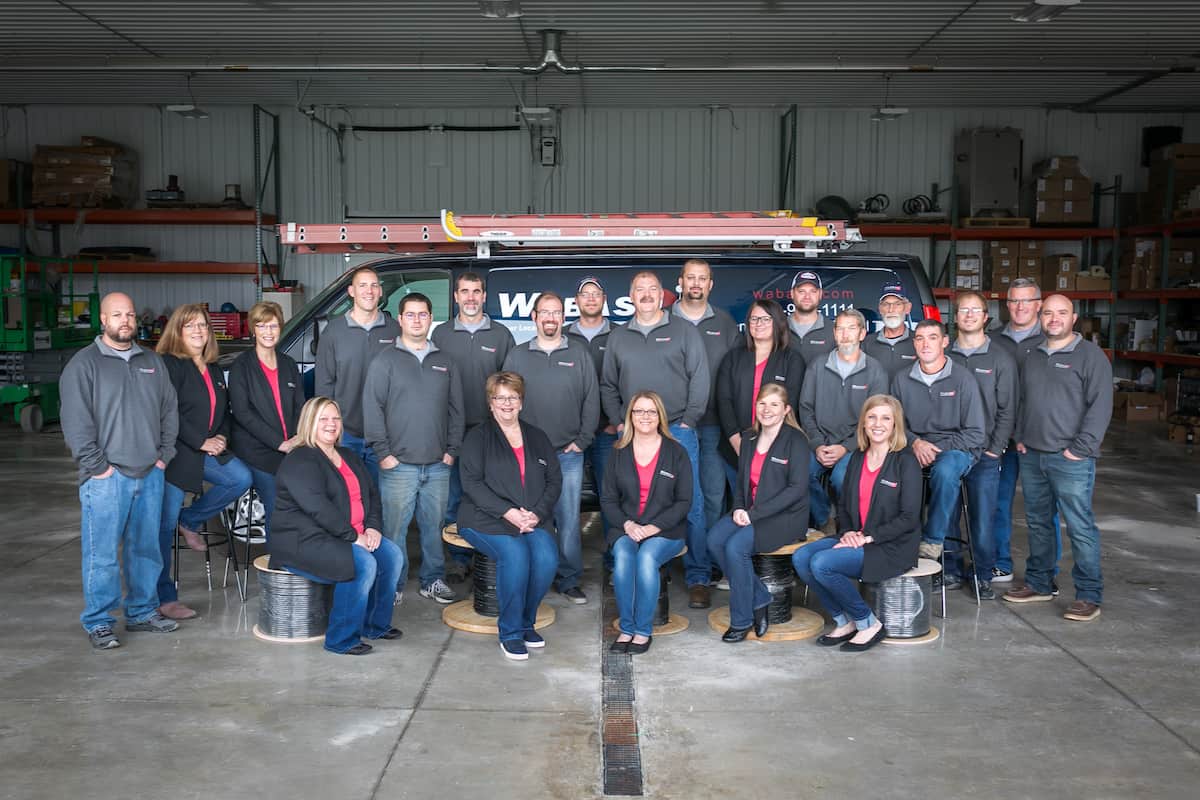With the climate for municipal broadband becoming increasingly difficult to navigate, we wanted to showcase regional providers who are doing their part to bring high-speed internet to rural, underserved areas.
To find out more about the changing landscape, we asked 19 rural broadband providers to share their founding stories, walk us through their company’s evolution, and tell us what sets them apart.
| Provider | HQ |
|---|---|
| Agri-Valley Services | Pigeon, MI |
| Albion Telephone Company (ATC Communications) | Albion, ID |
| Atlantic Telephone Membership Corporation (ATMC) | Shallotte, NC |
| Blue Valley Tele-Communications | Home, KS |
| Canby Telephone Association, dba DirectLink | Canby, OR |
| Home Telecom | Charleston, SC |
| Intelligent Fiber Network (IFN) | Indianapolis, IN |
| Madison Telephone Co. | Staunton, IL |
| MetaLINK Technologies, Inc. | Defiance, OH |
| Midwest Energy & Communications | Cassopolis, MI |
| North Dakota Telephone Company | Devils Lake, ND |
| Northwest Communications Cooperative | Ray, ND |
| PEAK Internet | Corvallis, OR |
| Pineland Telephone Cooperative, Inc. | Metter, GA |
| Pioneer Telephone Cooperative | Kingfisher, OK |
| South Central Telephone Association Inc. | Medicine Lodge, Kansas |
| Wabash Communications Co-Op | Louisville, IL |
| Wabash Mutual Telephone Company | Celina, OH |
| West River Telecommunications Cooperative | Hazen, ND |

Agri-Valley Services
What’s one thing people might not know about how your company was started?
Agri-Valley Services (AVS) was not explicitly created to provide internet service. In the 1980s and 1990s, several telecommunications services were deregulated by the Michigan Public Service Commission and the FCC. In response to these changes, AVS was founded as a sister company to Pigeon Telephone Company to provide non-regulated telecommunications services within our region. As internet access started to increase, AVS was the ideal provider since internet access was, and still is, a non-regulated service.
How has the company evolved since those early days and where do you see the company going next?
Since opening its doors as a dial-up ISP on April 10, 1996, Agri-Valley Services is a dramatically different company. Initially, the company only offered dial-up service and was publicly known by its email domain name, AVCI.net. Today, AVS bills itself as a “rural broadband provider” and neither dial-up service nor the “AVCI.net” name remain. This transformation has been fueled by the adoption of cutting-edge internet technologies.
Over the past 23 years, service offerings have continually advanced. The three current broadband service offerings are AVS truNet LTE fixed wireless, AVS FiberNet fiber-optic and AVS DSL. The company is looking to the future by continuing to expand its FiberNet network and plans to stay on the forefront of emerging technologies.
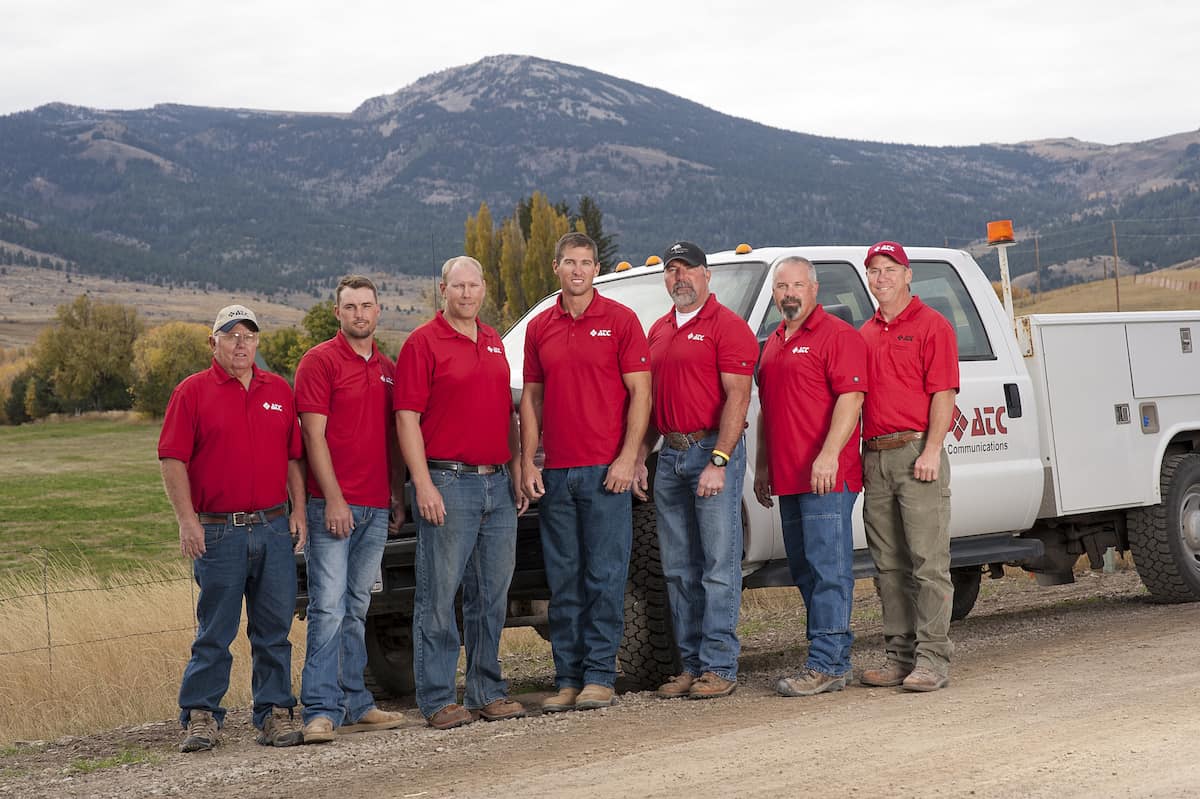
Albion Telephone Company (ATC Communications)
What’s one thing people might not know about how your company was started?
Albion Telephone Company (ATC Communications) is a family-owned and operated communications company nestled in the heart of Albion, Idaho. Our company originated back in 1929, with only 18 magento crank telephones, a handful of broken-down pine poles, and a few hundred feet of iron wire.
Since this was before the invention of landline dial tones, “Grandma Breslin” personally sat at the switchboard 24 hours a day, 365 days a year. She became fondly known as “Central” to everyone in the area, as she connected calls for over 35 years. During this time, she also served as the town’s only nurse, providing medical aid to anyone in need. Grandma Breslin’s caring nature and spirit of service are the foundation on which ATC continues its operations today.
How has the company evolved since those early days and where do you see the company going next?
ATC has been in the internet business since the dial-up days, and we’ve learned a thing or two along the way. In 2014, we became the first communications company in Idaho to be GIG Certified by NTCA, The Rural Broadband Association. This means our gigabit internet speeds have been independently verified and our customers actually get the speeds they pay for. As smart home automation continues to advance, ATC will be here supporting our communities every step of the way. We’re real people, delivering really fast internet.

Atlantic Telephone Membership Corporation (ATMC)
What’s one thing people might not know about how your company was started?
Atlantic Telephone Membership Corporation (ATMC) is a cooperative, and unless you’re from a rural area, you may not have known that communications cooperatives exist. The entire reason ATMC was founded in the early 1950s was because our area was thought to be too rural and unprofitable to be served by the Bell companies. To get telephone service, a group of local farmers, fisherman, teachers and shop owners went door-to-door getting support from friends and neighbors to start their own company. Over sixty years later, ATMC is in the 4th fastest growing county in the nation and employs more than 230 people.
ATMC offers high-speed internet with speeds of up to 1 Gigabit, cable TV, home security with smart home solutions, wireless, and yes, we still have telephone service. And because we are a cooperative, we are locally owned and our members vote for our board of directors, so our decision-making stays local, too. ATMC is also a non-profit, and since our inception we’ve given back more than $47 million dollars in capital credits to our cooperative members.
How has the company evolved since those early days and where do you see the company going next?
In the early days, our primary mission was to connect members via telephone lines. Today, we are still in the business of connecting our members, but the methods have evolved tremendously. Broadband is now our primary line of business, and we have been installing fiber optic communications because it’s the fastest and most reliable way to deliver high-speed internet. Over the past 14 years, ATMC has installed fiber optic technology with speeds of up to 1 Gig to countless neighborhoods, business districts, barrier islands, schools, healthcare facilities, public safety entities and more. Our leadership team is always looking at ways to upgrade and expand our broadband network so that we ensure our customers have access to the best technologies around.
In addition to broadband expansion, we’ve launched new technologies like MergeTV, internet-streamed TV, where our customers have the option to enjoy our cable offerings via their smart TV without cable boxes and without cable box fees. And because most of our local businesses can’t afford their own in-house IT staff, we now offer network support, managed services, data backup and recovery, and IT support to businesses of any size.
Blue Valley Tele-Communications
What’s one thing people might not know about how your company was started?
Blue Valley Tele-Communications (BVTC) was originally incorporated as Blue Valley Telephone Company in 1956. It was organized by a group of local farmers who couldn’t get phone service from Southwestern Bell due to their rural locations. The farmers worked diligently to establish a cooperative governed by a board of directors who would put the needs of its owners ahead of profits. That mentality still holds true today. As one of the first in the nation to deploy Fiber-to-the-Home (FTTH), BVTC is not only a leader in the industry, but a friend to the communities it serves.
How has the company evolved since those early days and where do you see the company going next?
BVTC has grown exponentially from its humble beginnings in 1956. From purchasing Centralia Telephone Company, Home Telephone Company, Oketo Mutual Telephone Company, Summerfield Mutual Telephone Company, Vermillion Telephone, and Force Telephone Exchange in 1960 to our most recent purchase of Westmoreland and Onaga from Sprint in 2005.
Because BVTC had expanded its offerings from telephone service only to including internet, computer repair, and television services, the board knew they needed to change the company name to one more encompassing of its service offerings. In 2001 the name was officially changed from Blue Valley Telephone Company to Blue Valley Tele-Communications.
Just a few years later, the company expanded once again by offering competitive services to five additional communities – nearly doubling its subscribership. In 2017 BVTC purchased an IT company, Networks Plus, and broadened its reach across the entire state of Kansas by offering managed cybersecurity services. What does the future have in store for this company? Broadband, broadband, and more broadband!
Canby Telephone Association, dba DirectLink
What’s one thing people might not know about how your company was started?
Canby Telephone Association, dba DirectLink, was founded by local farmers in 1904 as the Macksburg Mutual Telephone Association. Members were paid 25-cents per pole they furnished to support the effort, and within two years, demand for telephone service had surpassed the original four-line switchboard. The switch was moved to neighboring Canby, Oregon, renamed to Canby Telephone Association and upgraded to 50 lines in 1906. The only employees at the time were a switch tender (operator) and a lineman who served all cooperative members. The switch tender received 3 cents per social call and 5 cents per business call when connecting to other companies, plus $2.00 per member per year. The lineman’s wages were 25 cents per hour.
How has the company evolved since those early days and where do you see the company going next?
Today, DirectLink serves over 8,000 members. Nearly 70 employees work together to bring Internet, Video and Voice services to almost 100-square miles of service area. We pride ourselves on superior customer service and consistently maintain satisfaction ratings of 90% and above.
Always forward thinking, DirectLink developed and launched the first app-based television service in the nation for live, local broadcast channels in 2013, winning the TelcoVision Service Provider of the Year award and then the International Gimme Fiber Day hosting from the Fiber to the Home Council. We were also second in the nation to adopt and deploy the MobiTV platform in 2018.
On the network front, the company was the first in the state to offer Gigabit speeds, establish NWAX peering, and partner with Akamai for streamlined member experience. DirectLink also collaborated with local property developers in 2016 to pre-install smart apartment technology, offering prewired Gigabit broadband, WiFi, video and telephony capabilities in each residential unit.
From a logistical standpoint, DirectLink saw the changing governmental regulations and in 2012, partnered with other local cooperatives to create the first in the west, second in the nation telecom-focused, shared personnel services model to realize maximum efficiencies and financial savings. Multiple telecommunications companies in the local valley share accounting, leadership, marketing and human resources departments through their joint-owned partnership, Consolidated Business Services of Oregon.
Moving forward, the strength of DirectLink lies in its continued forward-thinking strategy of shared services, fiber saturation, and investment in our personnel.
[William S. Helmly, President & CEO of Home Telecom in front of Corporate HQ and CS office]
Home Telecom
What’s one thing people might not know about how your company was started?
Home Telecom has a long history of being on the cutting edge of technology. It all started when R.O. Winter partnered with five Moncks Corner business investors 115 years ago to start what was then called the St. John’s Telephone Company. The company was sold to The Corbett Package Company in 1916 after Mr. Winter’s death, but later purchased back by Mr. Winter’s widow, then Mary Briscoe, in 1939. Mrs. Mary noted that this was the “…biggest job a little, gray-haired widow ever saw.” The company name was then changed to Home Telephone Company, and the rest is history!
Mr. Winter’s remarkable and almost inherent vision for the future of technology and how it could help grow his community’s economy continues today. Now run by Mr. Winter’s great grandson William S. Helmly, President and CEO of Home Telecom, the company vision remains intact – just as it did when William’s grandfather, Shellie Helmly, and his father, Robert Helmly Sr., were leading the company. This idea continues as Home Telecom routinely promotes its defined vision, “To be the BEST and ‘Easy to do Business With’ company to globally connect our community.”
Home Telecom is easily defined by its growing fiber network, second to none with secure connections to homes and businesses, coupled with managed WiFi to provide simple access to the internet and enable applications to stay connected to the world. Top it off with a rich history of dedicated, local employees with a passion to serve the community.
How has the company evolved since those early days and where do you see the company going next?
Home Telecom takes pride in having a resilient, state-of-the-art network that has been growing since 1904 from 4 miles of copper wire and 6 telephones to 84,000 fiber miles connecting multiple redundant fiber rings. Its backbone today can support multiple diverse 100 Gbps connections, allowing for the ever-growing demand for bandwidth.
Home Telecom became one of the first Fiber-To-The-Premises providers in the nation with its 2004 purchase of Daniel Island Media Company. Over 50% of Home Telecom’s 28,500+ addresses served are connected with fiber directly to their premises, including single-family homes and multi-dwelling units as well as businesses, from the largest enterprise to the smallest “mom and pop.”
In 2013, Home Telecom became the first to offer Gigabit internet speed in South Carolina – up to 60x faster than the average internet speed at that time. Home Telecom also offers secure WiFi coverage for the entire home or business. Managed WiFi allows Home Telecom to monitor connections and networks to ensure an optimum customer experience.
Home Telecom’s fiber network and secure connections allow easy access to the latest and greatest applications such as Streaming Video Services, Hosted VoIP, and Home Automation. Thanks to its future-proof fiber network and connections to premises, Home Telecom is ready to offer “The Next Big Thing!”
Equally important to Home Telecom employees as providing quality technology is ensuring an excellent customer experience during the entire customer lifecycle – from first impression to final contact.
Before turning over the reins of the company to the next generation, Mrs. Mary wrote her recollection of the company history. She ended with, “I gave 31 of my best years to the industry. I built, labored and still love the business and hope to see it expand and grow.”
Mary Briscoe’s hopes have come to fruition as the industry continues to evolve and Home Telecom continues to grow and lead the industry while serving its community.
Intelligent Fiber Network (IFN)
What’s one thing people might not know about how your company was started?
The opportunity that allowed IFN to form actually came from the telecom downturn in the early 2000s. Companies were eager to build fiber across the state, but unfortunately some got ahead of themselves and couldn’t make it through. Around 700 miles of fiber became available because of this. Twelve independent phone companies in Indiana came together and purchased those 700 miles and then built another 700 miles to connect the network. The companies then formed IFN (then Indiana Fiber Network) to operate the network.
How has the company evolved since those early days and where do you see the company going next?
When IFN was founded in 2002, it was purely to serve its members who bought and built the fiber assets. Today, IFN has over 4,500 miles of fiber and 20 member/owners. I joined IFN in 2007 as the 14th employee. At that time, we were just signing our first major wireless carrier agreement and did not yet have a single healthcare account. Two of the biggest aspects of our business today – wholesale and enterprise – were just beginning back then. Today, IFN provides connectivity to all the major carriers and numerous rural and urban hospitals and clinics across Indiana. It also hosts the Indiana Rural Health Association shared platform for the Indiana Telehealth Network.
I look forward to being part of IFN’s continued network expansion and moving beyond our state’s borders. I believe we’ll keep growing our enterprise and wholesale businesses and would like to see IFN get into new vertical markets.
Madison Communications
What’s one thing people might not know about how your company was started?
Madison began in 1940 as a family-owned and operated local exchange carrier called Worden Telephone Company. Today it is a fully integrated service provider of fiber-based high-speed internet access, digital phone, HD entertainment programing, and other IP solutions to residential and enterprise customers in Illinois. Additionally, Madison has a national reach through its partnership with INDATEL, which connects the fiber optic networks of independent telephone companies across the United States. In 2015, Madison was one of 12 rural communications firms in North America to be honored with the Smart Rural Community Award by NTCA, The Rural Broadband Association.
Madison’s deployment of advanced communications services and collaboration with local leaders and business partners enables innovation in the areas of economic development, healthcare, and education. Madison’s motto is “Making the Difference”, and it encourages a culture that cares for its communities and customers by proudly delivering state-of-the-art products and services.
How has the company evolved since those early days and where do you see the company going next?
Madison Communications has evolved from a plain old Illinois telephone service provider, established in 1940, to an integrated, fiber-based, rural network service provider. Madison is proud to bring advanced fiber-based and IT services to help ensure the communities it serves can effectively compete for viable economic futures.
Madison’s future plans include additional fiber optic deployments to further penetrate anchor institutions in its region, such as manufacturing, financial services, healthcare, and education. These plans integrate local community networks into Madison’s Gigabit transport network with Points of Presence (POP) sites in Chicago and St. Louis.
Our evolution remains with our commitment to employee development as a core value, showcased by Madison’s extreme pride in its technician field staff who recently won the “Best Team Overall” award for the 10th year in a row at the SCTE Cable Games in May.
MetaLINK Technologies, Inc
What’s one thing people might not know about how your company was started?
MetaLINK Technologies started in the original founders’ basement as a dial-up business.
How has the company evolved since those early days and where do you see the company going next?
Since launching high-speed wireless internet, we are on our 6th Generation of access equipment and operate in three states.
In 2000 we formed QualStar Communications, Inc., and began offering DSL and high-speed wireless in Defiance, and from 2001-2009 we expanded our wireless footprint to include Michigan and Indiana. In 2010 QualStar Communications started offering fiber transport and last mile services.
The past few years have seen many new developments. In 2016 we launched Long Term Evolution (LTE) in the 3.65 GHz Spectrum, then in 2017 we expanded our LTE Service and launched Cambium in the 5.8 GHz Spectrum and 25M/3M Service. In 2018 we launched 50M/5M Service and Cambium 900 MHz, and so far this year we launched 100M/10M Service and 60GHz 5G Hub Home Service.
I anticipate the company competing in Rural Tier 3-4 markets predominantly served by Price Caps Companies with Fixed 5G Wireless Services to offer 100M+ service.
Midwest Energy & Communications (MEC)
What’s one thing people might not know about how your company was started?
Midwest Energy & Communications (MEC) has provided electric distribution services in rural portions of southern Michigan and northern Indiana and Ohio since 1937. Our high-speed fiber internet story is much like the electricity story; we came in to serve when and where the incumbent providers would not. Rural areas across the country were unserved or underserved with true high-speed options, and our customers looked to us for options.
Our decision to invest in a fiber infrastructure was born out of our own need for robust communications across our electric distribution infrastructure for utility purposes, and our ability to leverage that investment to deliver the best available high-speed option to our customers.
In 2015, at the direction of our Board of Directors, we began a five-year fiber internet deployment plan for our southwest Michigan service territory. Now in our fifth and final year, we are preparing to take construction to our southeast Michigan service territory in 2020, and by 2021 all our electric customers will have access to high-speed fiber internet.
Our vision is to create vibrant, relevant, and sustainable rural communities. We believe geography should not define a person’s scope of opportunity; high-speed fiber internet helps our rural residents have the same opportunities as their urban counterparts.
How has the company evolved since those early days and where do you see the company going next?
We knew how to do electricity and how to provide first-in-class customer service in all areas of our operations. Designing, implementing and servicing a high-speed fiber internet platform was a whole new ballgame and required a huge learning curve. We added the right players to our team and partnered with contractors who shared our passion to bring our vision to reality, and in June we will celebrate our 10,000th subscriber. Word of mouth spread quickly, both within our electric customer base and outside our service territory. Our first priority was always to make sure our electric customers had access to this service.
As we wrap up our southwest Michigan deployment and begin construction in southeast Michigan, we are now looking at expansion outside of our electric service territory. We’ve seen many well-organized, grassroots efforts by neighborhoods, townships, and communities to bring our service into their area and we are carefully evaluating future opportunities and preparing to engage with construction offers.
We are a customer-owned cooperative, so any growth outside of our electric base will ultimately benefit our electric customers. It’s a win for the greater region and a win for our cooperative and its customers.

North Dakota Telephone Company (NDTC)
What’s one thing people might not know about how your company was started?
On November 1, 1993, TPC, Inc., a consortium formed by United Telephone Mutual Aid Corporation (Langdon, ND); Dakota Central Telephone Cooperative (Carrington, ND); and Polar Communications (Park River, ND), purchased 15 exchanges in the Devils Lake area from Contel of North Dakota, forming North Dakota Telephone Company (NDTC).
On June 1, 1996, NDTC expanded when 11 additional exchanges were acquired via purchase from US West. NDTC grew from 10,000 to nearly 20,000 access lines in less than three years.
How has the company evolved since those early days and where do you see the company going next?
Over the years, we have shifted from being primarily a landline provider to an internet and television provider, converging from narrowband to broadband connectivity. We are a technologically progressive telecommunications company with a network that is 100% fiber. We are part owner of Dakota Carrier Network (DCN), North Dakota’s largest fiber communications network. North Dakota is one of the most connected states in the U.S.
NDTC will be a future leader of telecommunication technologies such as the Internet of Things (IoT), voice-assisted, wireless, cloud, video streaming services and more.
Northwest Communications Cooperative
What’s one thing people might not know about how your company was started?
In 1949, the first meeting was held in Williston to discuss forming a county-wide telephone system. An organizational meeting was held in Wildrose in July 1951, and Northwest Mutual Aid Telephone Corporation, later to be renamed Northwest Communications Cooperative (NCC) in 1986, was born.
The communities that formed the original cooperative included Ray, Alamo, Epping, Marmon, Round Prairie, McGregor and Wildrose. Between 1951 and 1957, several other cooperatives were purchased, including Columbus, Flaxton, Lignite, Larson, Grenora, Bowbells and Powers Lake. NCC’s two largest exchanges, Crosby and Tioga, were not purchased until 1996.
How has the company evolved since those early days and where do you see the company going next?
Since incorporation in 1951, NCC has always been very progressive, offering services that members want and need and investing back in the network. It’s a continuous work in progress to keep up with technology changes and consumer demands.
Between 1981 and 1990, NCC became the first telephone company in ND to operate a cable TV system, the first telephone company in ND to have an all-digital switching and transmission network, the first telephone company in ND and the first REA borrower in the US to operate a single mode fiber optic cable system, and the first telephone company in the US to own and operate a wireless cable TV system. In 1997 we became an ISP.
This year, NCC will complete our 10-year build out plan to convert all customers to a fiber optic network, enabling every customer in the NCC service area with up to 1Gbps speeds. Over the past 7 years, NCC’s internet traffic has increased by over 400%. NCC’s fiber investment has allowed us to meet the steep upward curve of our membership’s demand for more bandwidth and to provide a more redundant and reliable network.
Broadband is the foundation of our future and NCC will be in a strong position to meet the communication demands of our membership.
PEAK Internet
What’s one thing people might not know about how your company was started?
“PEAK” was originally started by the computer science department at Oregon State University (OSU) in 1986. Initially, the service was provided to the public for free, with a focus on educating the community on the potential of the Internet. PEAK was an acronym for Public Electronic Access to Knowledge.
In 1996, PEAK was transferred out of OSU, and made a private entity by a group of local investors. In 2002 PEAK was purchased by Casco Communications, a partnership between a telephone and an electric cooperative, and the rest is history. The PEAK name was maintained, and growth continued throughout the State of Oregon.
How has the company evolved since those early days and where do you see the company going next?
When we started in 1996, our upstream bandwidth to the world consisted of a couple of T1 lines. Today we are pushing over 20 Gig. In the beginning, customer access was by dial-up modem and the challenge was to avoid a long-distance call to the modem pools.
Over the past three decades we have enjoyed technical evolution and developed a hybrid network capable of reaching the most remote customers with broadband. We have deployed almost every flavor of DSL, Fixed Wireless, Satellite and now Gigabit services via Fiber to the Home. We serve many remote customers in rural areas (some off-grid) as well as Enterprise, Government, Hospitality, University and Health Care clients.
Over the next decade our focus is on infrastructure and strategic partnerships, leveraging our expertise and building more fiber deeper in our network for more scalability into the future.
Pineland Telephone Cooperative, Inc.
What’s one thing people might not know about how your company was started?
Founded in 1951, the first office of Pineland Telephone Cooperative, Inc. (Pineland) was in Swainsboro, Georgia. Considering Pineland’s recent partnerships with several electric membership cooperatives across the state, it may be interesting to learn that the funding used to purchase the initial four telephone exchanges forming Pineland Telephone Cooperative, Inc. came from the REA (Rural Electrification Administration), the same funding partner for the electric cooperatives.
The initial four telephone exchanges forming Pineland were Adrian, Midville, Stillmore, and Twin City, all in Southeast Georgia. Interestingly, Pineland’s main office has never been in one of the original exchange locations. Although opened in Swainsboro, the office moved to Metter by the mid-1950s.
Pineland was the fourth telephone company and first telephone cooperative approved for an REA loan in the state of Georgia.
How has the company evolved since those early days and where do you see the company going next?
Much has changed since Pineland’s beginnings in 1951. Pineland has evolved into one of the leading employers and community partners in the areas served; however, one thing remains the same. Pineland was formed with the goal to provide telephone service to underserved areas in Southeast Georgia, making those areas more viable for economic growth and development. That same directive remains as work continues in the traditional cooperative territory and as the company expands into new ones, evolving from a telephone company to a gigabit-enabled broadband provider, with each customer able to connect to broadband speeds equal to or better than many urban areas.
Now serving seventeen exchanges in ten counties, Pineland’s mission is to offer an outstanding customer experience through the efficient delivery of progressive technology solutions in the markets served. We will achieve this mission by applying our core values of Excellence, Integrity, Innovation, and a Servant’s Heart in everything we do.
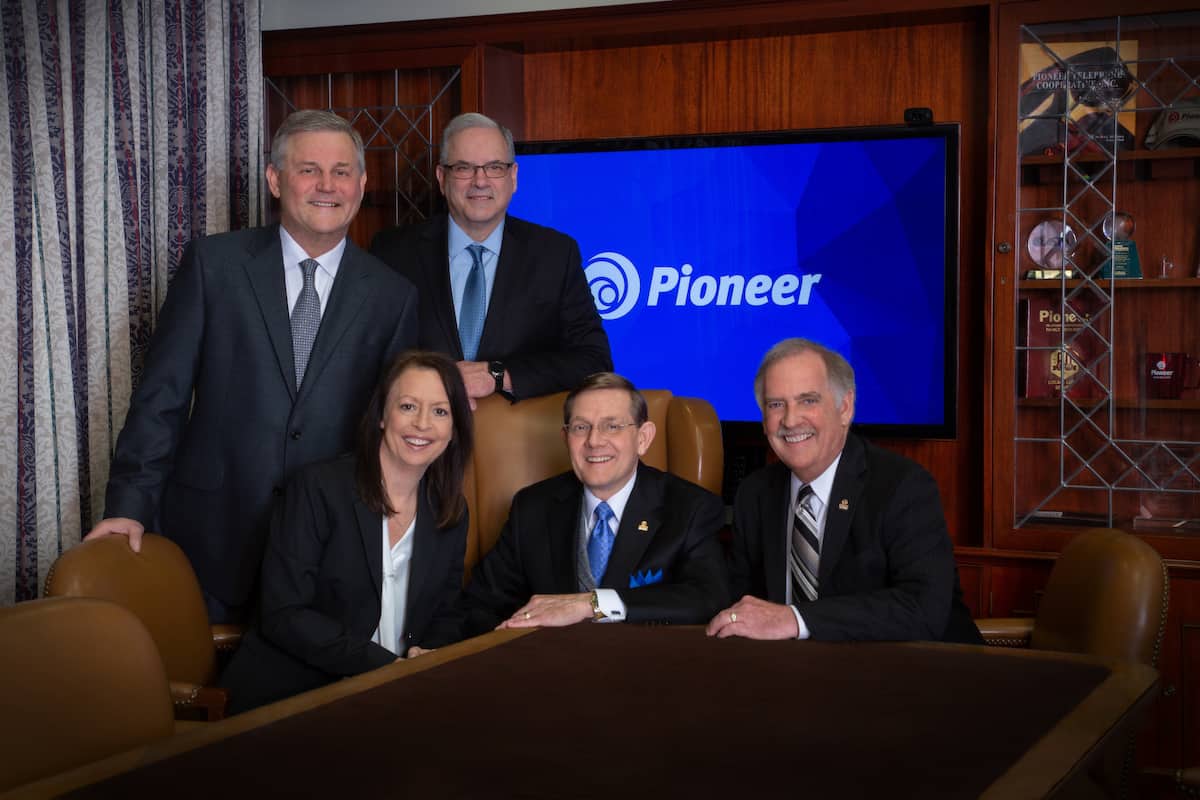
Pioneer Telephone Cooperative
What’s one thing people might not know about how your company was started?
Since 1953 in Fay, Oklahoma, many things have changed but the overall vision, direction and leadership of Pioneer Telephone has never lost its focus.
Following the land run and early economic booms of agriculture and oil supremacy between 1900 and 1930, Oklahoma was considered the fastest growing state in the nation. Even in the 1940s and 1950s it was clear that western Oklahoma needed more infrastructure and capital investments to attract new families and businesses and improve quality of life.
Fortunately, in 1953 a native son and leader in Oklahoma, Senator Roy Boecher, suggested working together with his neighbors to ensure the future of western Oklahoma. Pioneer Telephone Cooperative, Inc. was formed. To this day, investing in western Oklahoma and its communities is still the focus. Pioneer is actively building its fiber-optic network each day, reinvesting in the future, and taking you forward.
How has the company evolved since those early days and where do you see the company going next?
In the early days of Pioneer, the primary focus was communications. The goal was to install telephone and electricity to rural underserved homes and communities in need. Our goal from the early 1950s has evolved, with new investments focusing on broadband and Fiber to the Home (FTTH) for members and employees.
Pioneer has entered the Alternative Connect America Cost Model (A-CAM) with the focus to provide as many family-owned farms, ranches and small businesses with FTTH. A-CAM will provide over 13,000 locations with FTTH across western Oklahoma. Pioneer will also be investing over $50 million of general funds over the next two years to overbuild fiber in multiple communities that are not covered by ACAM.
These commitments to Pioneer’s members will ensure an exceptional broadband experience and allow future network enhancements such as IoT devices and applications. We are investing today for opportunities tomorrow.
South Central Telecom
What’s one thing people might not know about how your company was started?
South Central Telephone Association was started by a rancher from Lake City, Kansas who was frustrated with not having dependable telephone service. In 1953, Govan Mills spearheaded a solution for service by meeting with rural exchanges in the South-Central part of Kansas to see if they would be interested in participating in a telephone cooperative. Through his efforts, the first organized meeting was held in the small Kansas town of Sun City, where people were selected to serve as a steering committee to help the process along. South Central Telephone Association, Inc. was then incorporated in July 1953.
How has the company evolved since those early days and where do you see the company going next?
Our company has gone from being a telephone provider in 1953 to a leading, local broadband provider today. In 1994, we built a fiber-optic ring that connected our nine exchanges. It contained 254 miles of fiber-optic cable and was the first step towards becoming a broadband company.
Over the years, we have replaced copper wiring with fiber-optic cable and are serving nearly 100% of our customers with fiber-to-the-premises in all the communities we serve. We continue to expand our network into new areas and continue to invest in cutting-edge technology to bring affordable and reliable broadband connections to rural South-Central Kansas and North-Central Oklahoma.
Wabash Communications Co-Op
What’s one thing people might not know about how your company was started?
Incorporated April 23, 1952, Wabash Telephone Cooperative originally provided telephone service to nine exchanges located in the counties of Clay, Edwards, Effingham, Jasper, Marion, Richland, Wabash, and Wayne in South-Central Illinois. In 1957 three exchanges were converted to a modern dial system. By 1963 construction was completed, and the remaining six exchanges were converted to dial. The old magneto system became a thing of the past.
By 1979, all member-customers were receiving one-party service. ANI conversions were made in 1973 through 1975 and three exchanges’ central dial offices were converted to electronic switching in 1979 and 1983. The digital conversion began in 1983 with installation of the Stromber-Carlson DCO in Louisville. During the next seven years each of the other exchanges were converted to digital switching, connected via fiber optic cable.
How has the company evolved since those early days and where do you see the company going next?
Since our early days in 1952, Wabash has strived to provide exceptional and affordable service to our customers, residential and business alike. We understand the needs of our communities and strive to provide the most updated services. Wabash leads in fiber optic infrastructure, telecommunications services and networking solutions. We first started deploying fiber back in 2008 in Bible Grove, Illinois, and have continued to deploy Fiber-to-the-Home (FTTH) since then.
Wabash is continuously expanding both its footprint and offerings. Over the last two years we purchased US Sonet in Salem and Montrose Mutual in Dieterich, and we just launched Wabash TV Streaming in May 2019. Wabash is also very involved in the local community and has handed out multiple $1,000 scholarships to area high school seniors for college.
Additionally, Wabash partnered with EJ Water to form Illinois Fiber Connect, an exciting join venture that brings FTTH technology to residents around the Midwest.
Wabash Mutual Telephone Company
What’s one thing people might not know about how your company was started?
Wabash Mutual Telephone Company began as our name implies: as a telephone company. In 1905, subscribers strung their own telephone wire on poles they cut from local woods in Wabash, Ohio. It wasn’t until 1911 that subscribers were able to make long distance calls to Celina, Ohio, a short 10 miles away. This was also the year Wabash became incorporated as a cooperative. Party lines were eliminated in 1985, and by 1986 a new digital switch was completed, providing subscribers with the county’s first 911 service. Can you imagine not having 911 service for 80 years?
How has the company evolved since those early days and where do you see the company going next?
Wabash Mutual Telephone Company’s offerings have changed exponentially since incorporation on October 19, 1911. Phone service is still a part of the business, but even that has advanced with offering HPBX to businesses. Today, our core offerings are internet, television and phone service. Our team is continually building our fiber and wireless networks, expanding our service area, and improving service for customers.
Staying true to our cooperative principles, Wabash will continue to adopt the latest technologies to remain a cutting-edge provider and grow throughout rural America. We can’t wait to see what comes next!
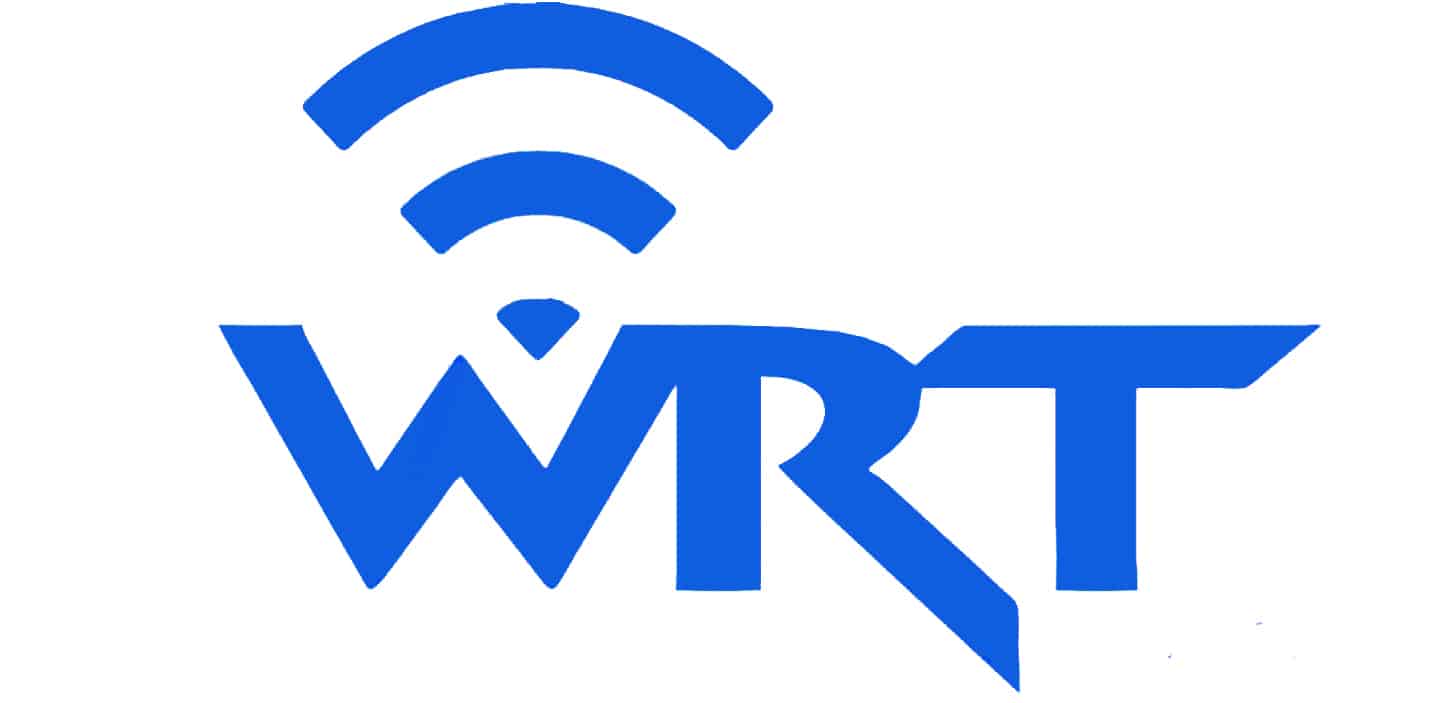
West River Telecommunications Cooperative (WRT)
What’s one thing people might not know about how your company was started?
WRT was created by a grassroots effort in 1952, thanks to local farmers going door-to-door collecting a “$5 show of support” per person to bring service to rural North Dakota. Over 4,000 people did not have telephone service out of the estimated 5,000 living in the five-county area.
As the cooperative formed and worked to bring telephone service to new members, they also began upgrading to buried lines and to four-party service.
The 1970s kicked off with upgrades to one-party voice service and ended with the installation of our first computer in 1979. The 80s and 90s saw many advancements in voice technology including digital switching equipment, touchtone service, and paging and fax service. In addition, WRT expanded service offerings to members with partnerships in cellular, satellite TV, long distance, and the launch of internet service in 1996.
How has the company evolved since those early days and where do you see the company going next?
From WRT’s first internet customer to current day, we transitioned from dial-up to 1 meg broadband to 100 meg faster fiber for base speeds. Through the upgrade from copper to fiber optics, WRT is now able to offer 1 gig symmetrical upload and download speeds for under $100. Members may also opt to take broadband only, with or without phone or via the internet-based Cloud Voice service.
As we continue to invest in our infrastructure to provide more speed to customers, WRT strives to meet and exceed our member needs by providing “X” as a service – allowing advanced internet “big” technology expertise at a scale affordable to “little” mom and pop shops.
In addition to the faster fiber, faster speeds and new advanced services, WRT members have come to truly appreciate what being part of a local cooperative means. Our members have received cooperative cashback ranging from 10-20% of the prior year’s spending for over two decades. That original “$5 show of support” has grown into a “$500 thank you for your support” on average, proving it really does pay to be a member of WRT!

